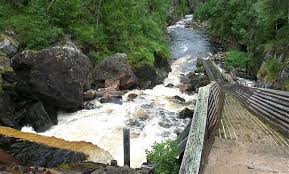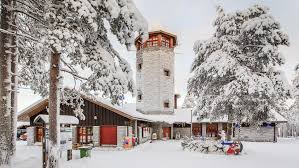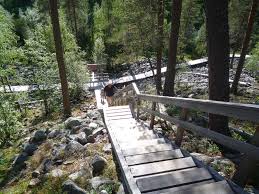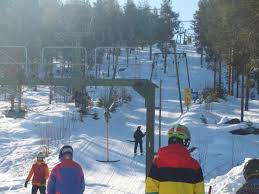Rovaniemi Nature

The magnificent Auttiköngäs day-trip destination. The Auttiköngäs nature trail runs across one of Finland's most spectacular waterfalls, through peaceful old-growth forest to a hilltop with views over Taiga forests. Auttiköngäs is enjoyable all year. In winter, go snowshoeing, in summer, enjoy a break in a cosy cottage cafe. Rovaniemi tourism operators rent snowshoes. In autumn, admire glowing autumn foliage from the observation tower and in spring, enjoy birdsong. Auttiköngäs even presents old-time log floating culture: an old flume still remains by the waterfall and the building next to the cottage café houses a small-scale exhibition about log floating. The clearly marked 3.5-kilometre nature trail is ideal for a family day out. Take a break at the campfire site by the River Auttijoki lean-to-shelter.

Sukulanrakka, There are 14 devil´s churns on the slope of Sukulanrakka at Rautiosaarisouth on Rovaniemi. Three of them are remarkable large and one of the largest in Finland. The largest devil´s churn is lying at the foot of the rocky hill and it is partly collapsed. Its diameter is 8 meters (over 26 ft.) and its depth is 15 meters (over 49 ft.). The two others are situating on the rocky hill and they are 10 and 9 meters (32,8 and 29,5 ft.) deep. The devil´s churns at Sukulanrakka were first investigated in depth in 1966 and 1967, when the debris that had accumulated in them over the millennia was cleared out with the help of local residents, under the supervisions of Professor Veikko Okko of Helsinki University.

Ranua Wildlife Park offers tourists and nearby inhabitants the opportunity to observe arctic animals throughout the year, in an as authentic environment for the animals as possible. Ranua Wildlife Park is open every day of the year, and the changing seasons do bring their own additional dimension to the life in the park.

Pyhä-Luosto National Park is a national park in Lapland, Finland. It was established in 2005 when Finland's oldest national park, Pyhätunturi National Park was joined to Luosto. This makes Pyhä-Luosto Finland's oldest but at the same time newest national park. The new park covers 142 square kilometres (55 sq mi). The most important features are geological specialities, old forests and wetlands. The park's base is formed by Finland's southernmost, 12-peak tunturi line. The tunturis are remnants of Alp-like mountains of 2 billion years of age. 200-year-old or older pine tree forests grow on the hills. The highest tunturis are Noitatunturi, 540 m (1,772 ft), and Ukko-Luosto, 514 m (1,686 ft).

Urho Kekkonen National Park is a national park in Lapland, Finland, situated in area of municipalities of Savukoski, Sodankylä and Inari. Established in 1983 and covering 2,550 square kilometres, it is one of Finland's largest protected areas. The Suomujoki river flows through the northern parts of the diverse park. The marked paths in its western part are an easy destination even for the inexperienced backpacker, whereas the wilderness is good for long and demanding trips. Most trips to Urho Kekkonen National Park are started from the Kiilopää fell center, the Aittajärvi lake along the Suomujoki river, or Raja-Jooseppi, and backpackers usually end up nearby the Saariselkä fell line, for instance on the top of its highest fell, Sokosti. Reindeer herding is still a common livelihood in the area.
